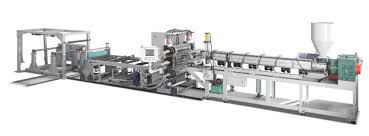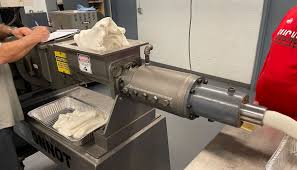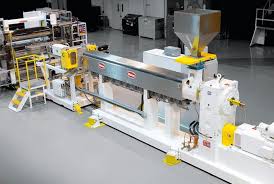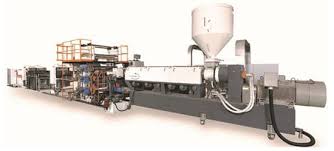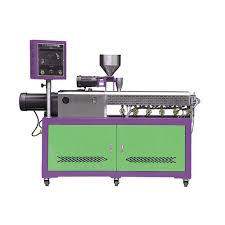In plastic manufacturing, ensuring consistent color and property distribution is essential for quality and performance. That’s where a master batch extruder becomes a crucial tool. This machine is designed specifically for producing masterbatches—concentrated mixtures of pigments, fillers, or additives encapsulated in a carrier resin. Masterbatches are later blended with raw polymers to customize color, UV resistance, flame retardancy, and other properties.
Whether you’re in packaging, automotive, electronics, or construction, a reliable master batch extruder can help you control costs, enhance product quality, and simplify your production workflow.
What Is a Master Batch Extruder?
A master batch extruder is typically a twin-screw extruder engineered to handle high levels of mixing, dispersing, and compounding. It melts and blends polymers with colorants or additives, producing pellets or granules that can be reintroduced into manufacturing processes.
The main components include:
Feeding system (for polymer resin and additives)
Twin-screw barrel (for intensive mixing and dispersion)
Heating zones (for precise temperature control)
Vacuum degassing system (to remove moisture or volatiles)
Pelletizing unit (strand, underwater, or air-cooled)
Applications of Master Batch Extruders
Color Masterbatches: Add vivid, consistent color to plastic products.
White and Black Masterbatches: Used in films, pipes, and injection-molded parts.
Additive Masterbatches: Incorporate UV stabilizers, flame retardants, anti-statics, anti-blocking agents, and more.
Filler Masterbatches: Combine calcium carbonate, talc, or other minerals with resins to reduce material costs and enhance properties.
Benefits of Using a Master Batch Extruder
Superior Dispersion: Twin-screw extruders provide high shear and thorough mixing, which ensures even distribution of additives.
High Throughput: Designed for continuous operation at high volumes, making them suitable for industrial-scale production.
Cost Efficiency: Producing masterbatch in-house reduces the need for pre-colored resins and gives more control over additive loadings.
Custom Formulation: Easily adjust pigment or additive ratios for tailor-made results.
Versatility: Suitable for a wide range of polymers including PE, PP, ABS, PET, PS, and biodegradable plastics.
How to Choose the Right Master Batch Extruder
When selecting a master batch extruder, consider:
Screw Diameter and L/D Ratio: A longer L/D ratio allows more time for melting and mixing.
Torque and Speed Requirements: Ensure it can handle high filler loads or viscous additives.
Output Capacity: Match your daily or hourly production needs.
Automation and Controls: PLC systems and touchscreen interfaces simplify operation and quality tracking.
Material Compatibility: Choose equipment that works well with your target carrier resins and additives.
Final Thoughts
A master batch extruder is more than a machine—it’s a critical part of a high-quality plastic production workflow. Whether you’re customizing color or enhancing performance, this equipment allows you to create consistent, cost-effective, and high-performance materials tailored to your end-use needs.


